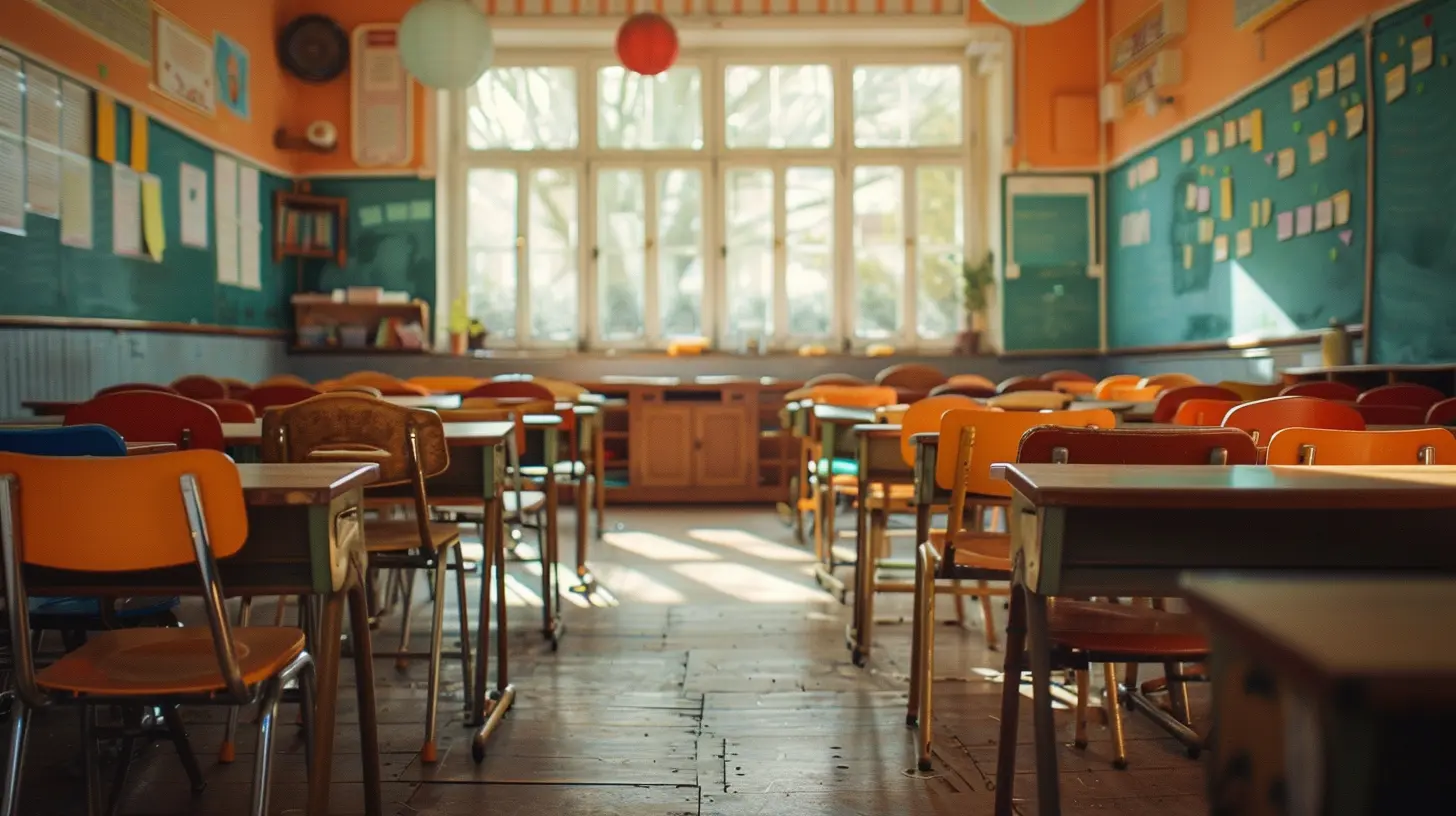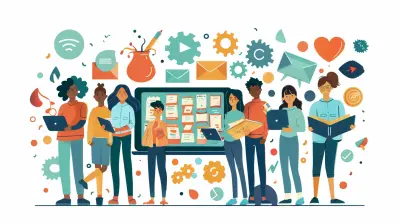The Power of Case Studies in Educational Research
25 December 2024
Education is constantly evolving, and so are the methods we use to study its complexities. One of the most powerful tools that educators and researchers have at their disposal is the case study. Ever heard of it? If you’ve been around any form of research, you probably have. But why are case studies so effective? What makes them stand out from other research methodologies in the field of education? Let’s dive deep into the power of case studies in educational research and explore how they can provide a unique, detailed glimpse into the real-world challenges and successes within the education system.

What Are Case Studies?
Before we jump into why case studies are so beneficial, let's quickly break down what a case study actually is. In the simplest terms, a case study is a deep dive into a specific individual, group, institution, or event. Think of it like a magnifying glass that zeroes in on one particular scenario, providing rich and detailed insights that you might not get from broader research methods like surveys or large-scale experiments.Case studies are often qualitative in nature, meaning they focus on descriptions and experiences rather than numbers and statistics. However, they can also incorporate quantitative elements depending on the research design. The combination of both qualitative and quantitative data makes case studies incredibly versatile. But the true power of case studies lies in their ability to bring real-world situations into the academic spotlight, offering a much-needed bridge between theory and practice.
Why Are Case Studies So Useful in Educational Research?
Now that we’ve defined what a case study is, let’s talk about why they’re so valuable in educational research. Imagine you're reading a textbook about classroom management strategies. It’s all theory and general advice, right? That’s great, but it’s often disconnected from real-life application. Case studies, on the other hand, give you the chance to see how these theories play out in actual classrooms, with real teachers and real students. Suddenly, the concept of classroom management is no longer abstract — it’s something you can observe and learn from in context.Here are some key benefits of using case studies in educational research:
1. Contextual Understanding
One of the primary strengths of case studies is their ability to provide a deep understanding of the context. In education, context is everything. No two classrooms are the same, and what works for one teacher or student might not work for another. Case studies allow researchers to dive into the specifics of a situation, considering all the variables that other methods might overlook.For example, a case study on improving literacy rates in an underfunded urban school will give you insights into the unique challenges faced in that environment. It will reveal how socioeconomic factors, community involvement, and school resources all play a role in shaping the educational experience. This level of detail simply can't be captured through larger, more generalized studies.
2. Real-World Application
Theory is great, but how does it actually work in practice? Case studies bridge that gap. They provide concrete examples of how educational strategies, policies, or interventions are implemented in real-world settings. This is invaluable for educators looking to apply research findings to their own classrooms or schools.For instance, let’s say you’re researching the effectiveness of a new technology-based teaching tool. A case study could show you exactly how a teacher integrated the tool into their lesson plans, how students responded, and what challenges they faced. These practical insights can help you make more informed decisions about whether to adopt similar strategies in your own educational practice.
3. Flexibility in Research Design
One of the coolest things about case studies is their flexibility. Since you’re focusing on a particular instance, you can use a variety of research methods to gather data. Interviews, observations, document analysis — you name it. This allows for a more comprehensive exploration of the case.Let’s say you’re doing a case study on a school that has successfully closed the achievement gap between students from different socioeconomic backgrounds. You could conduct interviews with teachers, students, and administrators. You could also observe classrooms in action and analyze student performance data. This multi-method approach provides a richer, more detailed understanding of the case than any single method could achieve on its own.
4. In-Depth Exploration of Complex Issues
Education is a complex field. There are so many factors at play — from individual student needs to school policies, societal issues, and more. Case studies allow researchers to explore these complexities in a way that other methods simply can’t.Take, for example, the issue of student engagement. A survey might tell you that 60% of students in a particular school feel disengaged, but it won’t tell you why. A case study, however, can dig deeper. It can explore the specific factors contributing to disengagement in that particular school, such as teaching methods, curriculum design, or even classroom environment. This level of detail is crucial for developing targeted interventions that address the root causes of the issue.
5. Personalized Insights
Because case studies focus on specific individuals or groups, they can provide highly personalized insights that are often missing from larger studies. In education, this is particularly important because no two students are exactly alike. What works for one student might not work for another, and case studies allow researchers to explore these individual differences in depth.For example, a case study on a student with learning disabilities might reveal how that student responds to different teaching methods, what challenges they face, and what strategies have been most effective in supporting their learning. These personalized insights can be incredibly valuable for educators looking to support students with similar needs.
6. Encourages Critical Thinking and Reflection
Case studies are not just a research tool — they’re also a learning tool. When educators and students engage with case studies, they’re encouraged to think critically and reflect on the material. Rather than passively absorbing information, they must actively engage with the content, considering how the findings apply to their own experiences and contexts.For example, a teacher reading a case study on classroom behavior management might reflect on their own classroom practices. They might ask themselves, "How would this strategy work with my students? What challenges would I face? How could I adapt this approach to fit my classroom?" This kind of critical thinking is essential for professional growth and development in education.

The Limitations of Case Studies
Of course, no research method is perfect, and case studies are no exception. While they offer many benefits, they also have some limitations that researchers need to be aware of.1. Limited Generalizability
Because case studies focus on specific instances, their findings may not be easily generalizable to other contexts. For example, a case study on a successful reading intervention in a rural school might not be applicable to an urban school with different challenges and resources. However, this doesn’t mean that case studies are useless for broader research. They can still provide valuable insights that can inform future studies and spark new research questions.2. Time-Consuming and Resource-Intensive
Conducting a case study takes time. You’re not just gathering data — you’re immersing yourself in the case, exploring all the nuances and complexities. This can be resource-intensive, especially if you’re using multiple research methods like interviews, observations, and document analysis. However, the rich, detailed insights you gain from a case study often make the extra effort worthwhile.3. Potential for Researcher Bias
Because case studies involve a deep dive into a specific instance, there’s always the potential for researcher bias. It’s easy to get too close to the case and lose objectivity. To mitigate this, researchers should be transparent about their methods and findings, and consider using multiple data sources to triangulate their results.
How to Effectively Use Case Studies in Educational Research
So now that we’ve explored the pros and cons of case studies, how can you effectively use them in your own educational research? Here are a few tips:1. Choose a Relevant Case
Make sure the case you select is relevant to your research question. If you’re interested in exploring student motivation, for example, choose a case that provides detailed insights into this issue. The more closely the case aligns with your research goals, the more valuable your findings will be.2. Use Multiple Data Sources
To get a comprehensive understanding of the case, use multiple data sources. This could include interviews, observations, document analysis, and more. By triangulating your data, you can ensure that your findings are robust and reliable.3. Be Transparent About Your Methods
Because case studies are highly detailed and context-specific, it’s important to be transparent about your methods. Clearly explain how you collected and analyzed your data, and be honest about any limitations or challenges you faced.4. Consider the Broader Implications
While case studies are focused on specific instances, they can still have broader implications for educational research. Consider how your findings might inform future studies, or how they could be applied in other contexts.
Conclusion: The Power of Case Studies in Education
Case studies are a powerful tool in educational research. They allow for a deep, contextualized understanding of complex issues and provide real-world insights that can inform both theory and practice. While they have some limitations, their strengths far outweigh their weaknesses. Whether you’re a researcher, educator, or student, case studies can provide valuable insights that help you better understand the challenges and opportunities in education.all images in this post were generated using AI tools
Category:
Educational ResearchAuthor:

Madeleine Newton
Discussion
rate this article
18 comments
Jasmine McDougal
In the realm of knowledge, case studies gleam, Illuminating paths where theories dream. Rich narratives weave, learning takes flight, In classrooms they spark, igniting the light. A symphony of insight, profound and wise, Education's canvas, where truth vividly lies.
March 18, 2025 at 5:42 AM

Madeleine Newton
Thank you for your poetic reflection! I'm glad you recognize how case studies illuminate learning and enrich educational research.
Maverick Kirkland
This article beautifully highlights the transformative impact of case studies in educational research. By showcasing real-world applications and diverse perspectives, we gain invaluable insights into teaching and learning processes. I appreciate the emphasis on practical relevance, which inspires educators to innovate and adapt for the benefit of their students. Thank you for sharing!
February 1, 2025 at 7:22 PM

Madeleine Newton
Thank you for your thoughtful comment! I'm glad you found the emphasis on real-world applications and practical relevance valuable for educators. Your appreciation means a lot!
Jamie Reilly
This article effectively highlights the significance of case studies in educational research. By providing in-depth insights into real-world contexts, case studies enrich our understanding of teaching practices and learner experiences. However, it's crucial to acknowledge their limitations in generalizability, ensuring a balanced approach to educational research methodologies.
January 29, 2025 at 8:53 PM

Madeleine Newton
Thank you for your thoughtful comment! I appreciate your recognition of the value of case studies and your point about the importance of balancing generalizability in educational research.
Alisha McGarvey
Great insights on the impact of case studies! They truly enrich our understanding of educational practices and inform effective teaching strategies.
January 25, 2025 at 4:25 AM

Madeleine Newton
Thank you for your kind words! I'm glad you found the insights valuable. Case studies indeed play a crucial role in enhancing our understanding of effective teaching.
Brick McGowan
Case studies offer invaluable insights in educational research, providing real-world contexts that enhance understanding, inform teaching practices, and drive effective educational innovations. Highly recommend incorporating them!
January 18, 2025 at 9:00 PM

Madeleine Newton
Thank you for your insightful comment! I completely agree—case studies truly enrich educational research by providing practical applications that can transform teaching and learning.
Nala Bellamy
Ah, case studies in educational research—because who doesn't love diving deep into the riveting world of a single classroom’s chaos? Forget broad trends; let's all gather 'round the campfire and share heartwarming tales of individual student journeys. Who needs data when you have anecdotes?
January 13, 2025 at 7:45 PM

Madeleine Newton
While broad trends are important, case studies provide invaluable insights into the complexities of individual experiences, offering a richer, more nuanced understanding of education in practice.
Bailey Alvarez
Case studies illuminate the complex interplay of theory and practice in education, revealing nuanced insights that quantitative data often overlook. They foster a deeper understanding of diverse learning environments, empower educators to tailor their approaches, and ultimately bridge the gap between academic research and real-world application.
January 7, 2025 at 4:51 AM

Madeleine Newton
Thank you for your insightful comment! I completely agree that case studies offer invaluable depth, helping educators connect theory with practice and enhancing the relevance of research in real-world contexts.
Caleb Holland
Insightful and thought-provoking!
January 2, 2025 at 5:08 AM

Madeleine Newton
Thank you for your kind words! I'm glad you found it insightful.
Reece McLoughlin
Case studies unlock transformative insights, driving innovation and deeper understanding in educational research!
December 29, 2024 at 8:21 PM

Madeleine Newton
Thank you! I'm glad you found the insights on case studies valuable for driving innovation in educational research.
Gisela McVicar
Oh, absolutely! Because who wouldn’t want to spend hours dissecting a case study instead of actually teaching? Nothing says “educational innovation” like analyzing a meticulously crafted 50-page report on the importance of... coffee breaks. Genius!
December 29, 2024 at 3:54 AM

Madeleine Newton
Thank you for your perspective! Case studies can indeed provide valuable insights into real-world applications, but I appreciate the need for balance in teaching methods.
Beatrice Wilson
Case studies are like educational treasure maps—each twist and turn reveals hidden nuggets of insight! Who knew parsing through real stories could unleash such powerful learning magic? Let’s dig deeper!
December 28, 2024 at 7:41 PM

Madeleine Newton
Thank you! I'm glad you see case studies as treasure maps—they truly unlock valuable insights in educational research. Let's keep digging together!
Kara McKinnon
This article effectively highlights the significance of case studies in educational research, showcasing their ability to provide in-depth insights and context. However, it's essential to consider the limitations and potential biases in case study methodologies.
December 28, 2024 at 12:07 PM

Madeleine Newton
Thank you for your insightful comment! I agree that while case studies offer valuable insights, it's crucial to acknowledge their limitations and biases to ensure a balanced understanding of the findings.
Holly McDermott
Case studies illuminate real-world applications in educational research.
December 27, 2024 at 7:17 PM

Madeleine Newton
Thank you! Indeed, case studies provide valuable insights by showcasing practical applications and outcomes in educational settings.
Tempra Matthews
Case studies? More like case *studies*—because who doesn’t love a little drama in education? They’re the reality TV of research, shining a spotlight on real problems and real solutions. So, let’s ditch the dry data and embrace the juicy insights these cases provide!
December 27, 2024 at 11:53 AM

Madeleine Newton
Absolutely! Case studies do bring a dynamic angle to research, transforming dry data into engaging narratives that highlight real-world challenges and solutions in education. Thanks for the insightful perspective!
Orion Adams
This article effectively highlights how case studies provide deep insights into educational practices and outcomes. By examining real-life scenarios, educators can better understand complex issues and develop practical solutions. It’s a powerful reminder of the importance of context in research and the value of qualitative analysis in education.
December 26, 2024 at 9:21 PM

Madeleine Newton
Thank you for your insightful comment! I'm glad you found the article highlights the significance of case studies in understanding educational practices and outcomes. Your appreciation of qualitative analysis is much appreciated!
Julia West
Great insights! Case studies provide invaluable depth and real-world context in educational research, enriching our understanding and improving teaching practices. Thank you for sharing!
December 26, 2024 at 3:52 AM

Madeleine Newton
Thank you for your thoughtful comment! I'm glad you found the case studies enriching—they truly enhance our understanding of educational practices.
Thornefield McLaughlin
Thank you for this insightful article on the importance of case studies in educational research. Your exploration of how they provide real-world context and deepen understanding is invaluable. I appreciate the emphasis on their potential to drive meaningful change in educational practices.
December 25, 2024 at 8:45 PM

Madeleine Newton
Thank you for your kind words! I'm glad you found the article insightful and appreciate your support for the role of case studies in enhancing educational practices.
Elsinore Sanchez
Case studies: the secret spice in the educational research casserole! They add flavor, texture, and those unexpected nuggets of wisdom that can turn a bland dish into a five-star academic feast!" 🍽️✨
December 25, 2024 at 5:46 AM

Madeleine Newton
Absolutely! Case studies enrich educational research by providing rich, detailed insights that transform theory into impactful practice. 🍽️✨
MORE POSTS

Writing Workshops: Collaborative Activities to Improve Writing Skills

The Impact of Nonverbal Communication in Language Learning

How to Teach Conflict Resolution to Young Children

How to Create a Media-Literate Classroom

Why Sleep Matters for Academic Performance

Enhancing Digital Literacy: Navigating the Online World

Promoting Mindfulness in Schools: A Guide for Educators

Decoding Digital Media: A Guide to Understanding Online Information

How to Use Peer Feedback to Improve Student Writing Skills

The Connection Between Physical Health and Academic Achievement

Applying Action Research to Improve Classroom Instruction